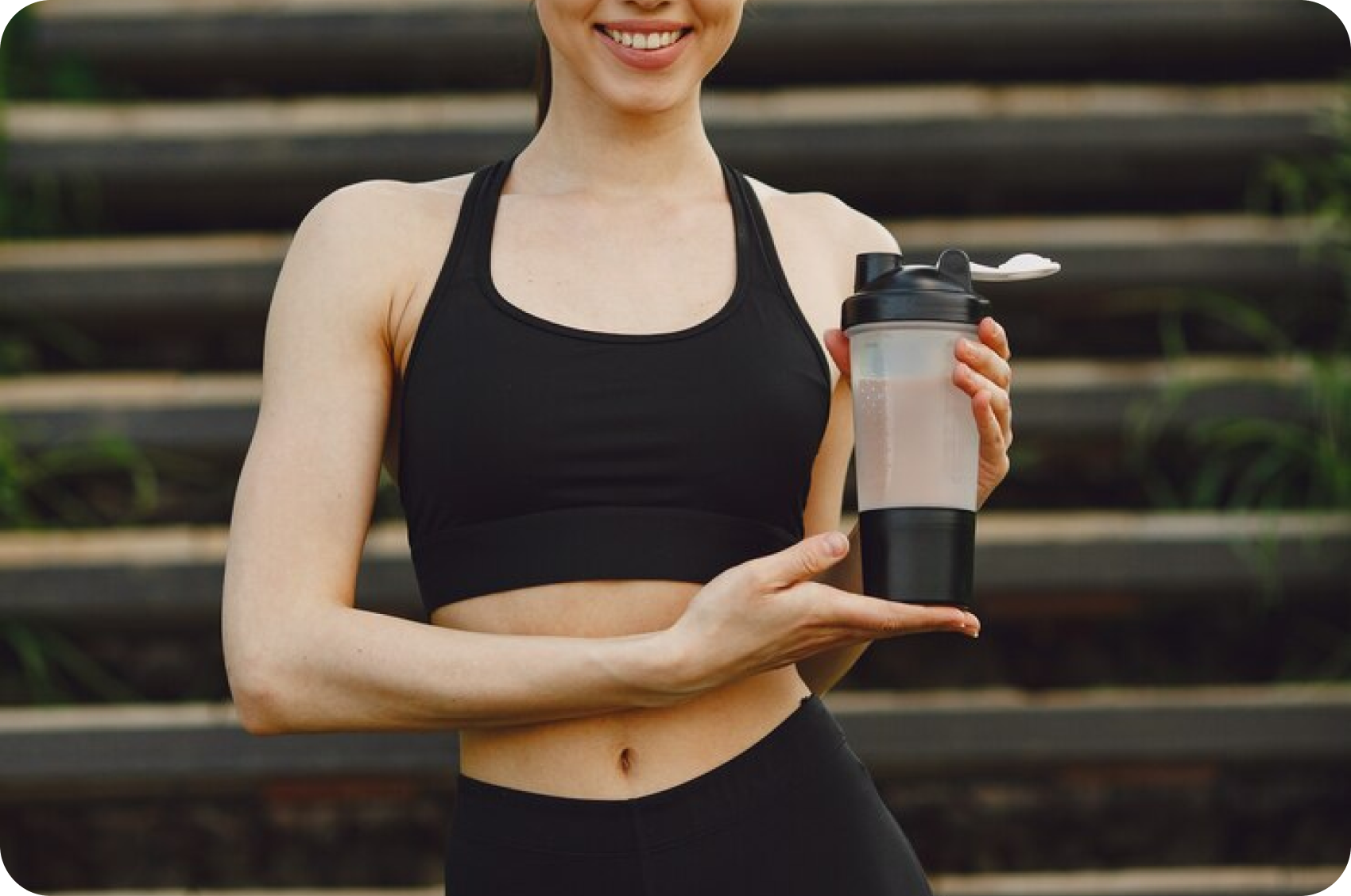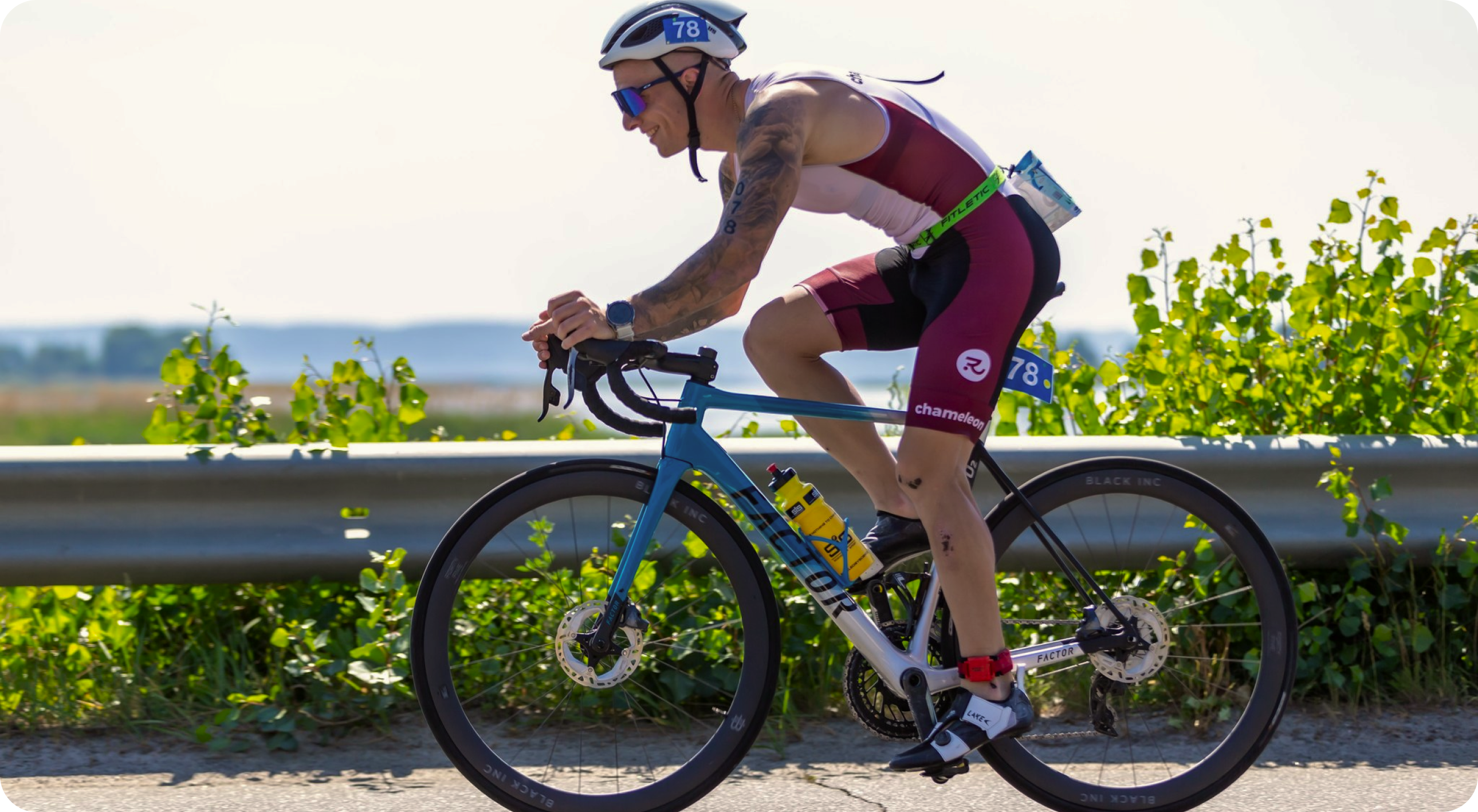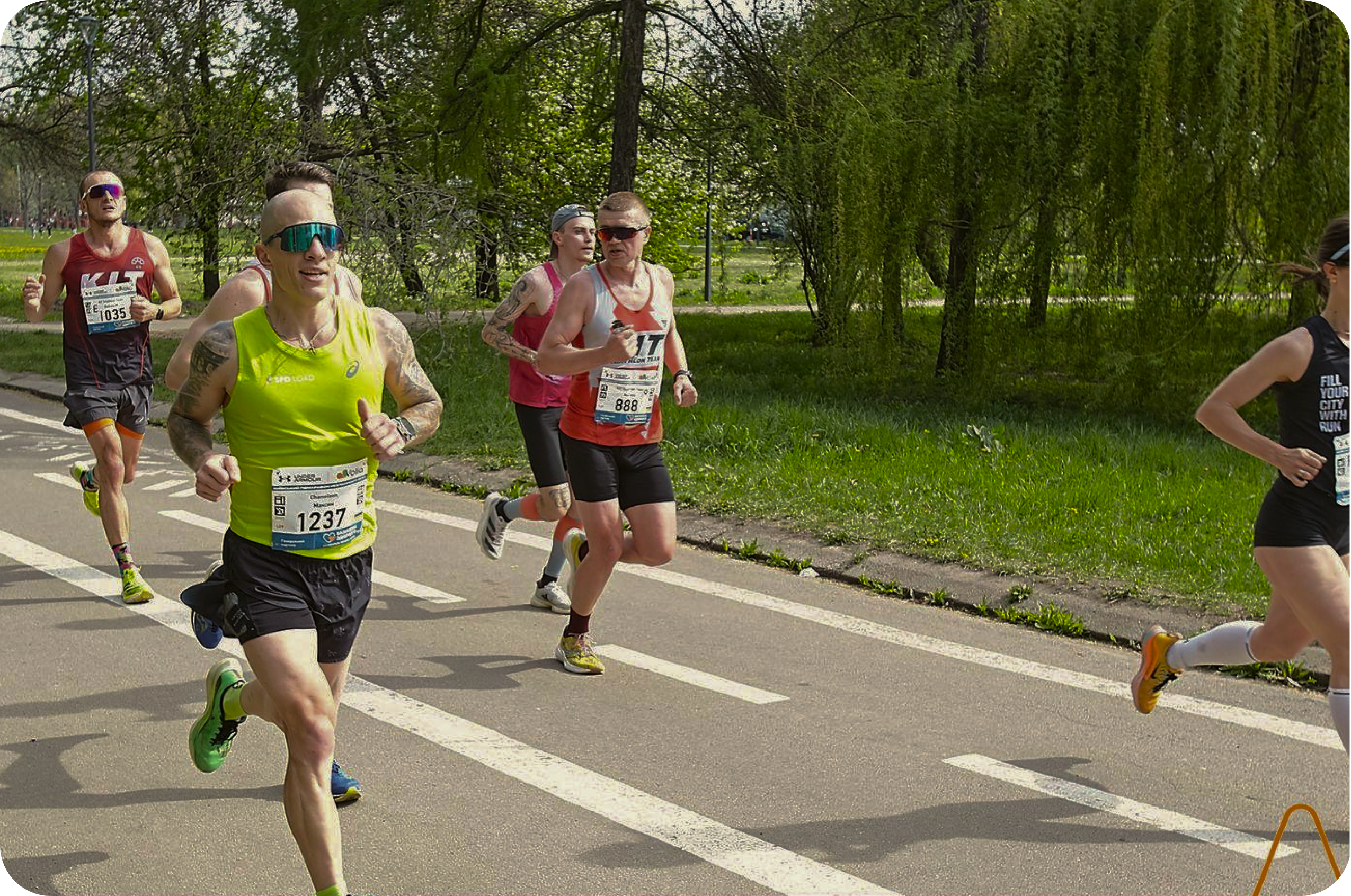Triathlons, by nature, are some of the most grueling and demanding sports.
Covering three distinct disciplines – swimming, cycling, and running – they challenge not just an athlete’s physical stamina but also their physiological resilience.
One aspect that bridges these challenges is the role of nutrition and hydration.
Thanks to a scientific approach, understanding the importance can significantly improve many factors.
Namely, performance, recovery and overall health.
The Physiology of a Triathlete: Why Nutrition and Hydration Matter
1. Energy Expenditure Across Three Disciplines
Swimming, cycling, and running each tap into the body’s energy resources differently.
A study by Smith et al. (2018) showed that during an Olympic distance triathlon, athletes burn about 8,000-10,000 calories.
Among them, cycling consumes the most energy, followed by running and then swimming.

2. Muscle Glycogen: The Primary Energy Reserve
Muscle glycogen acts as the primary fuel during intense workouts.
The rate of glycogen depletion varies based on exercise intensity and the individual’s conditioning (Coyle, 1991).
For triathletes, ensuring adequate glycogen reserves is critical.
This is especially true during the transition from one discipline to another.
3. Importance of Fluid Balance
Dehydration can result in a significant decrease in performance.
According to Cheuvront et al. (2005), even a 2% body weight loss due to dehydration can reduce an athlete’s performance by 10-20%.

Macronutrients: Building Blocks for Performance
1. Carbohydrates: The Fuel of Choice
The International Society of Sports Nutrition posits that carbs play an indispensable role in high-intensity sports.
Therefore, it recommends consuming 3-12 g per kg of body weight per day, depending on the phase and intensity of your training.
2. Proteins: Essential for Recovery and Repair
Protein aids in muscle repair post-exercise.
Moore et al. (2009) recommend an intake of 1.2-2.0g per kg of body weight daily for endurance athletes.
They emphasize post-exercise consumption for optimal recovery.
3. Fats: The Long-Distance Energy Source
In events lasting longer than 180 minutes, stored fats can provide 50-60% of the energy (Jeukendrup, 2017).
Adapting the body to efficiently use these fat stores can be beneficial for long-distance triathlons.
Micronutrients: The Unsung Heroes in Performance and Recovery
1. Importance of Electrolytes
These are crucial for muscle function and fluid balance.
According to the American College of Sports Medicine, replenishing lost sodium and potassium during prolonged exercise helps maintain performance.
2. Vitamins and Minerals for Optimal Energy Metabolism
B vitamins, iron, magnesium, and zinc play an important role in energy production.
They also contribute to the formation of hemoglobin and the maintenance of muscle function (Lukaski, 2004).
People can obtain B vitamins, iron, magnesium, and zinc through their diet by consuming foods like whole grains, meats, vegetables, and nuts.
Supplements, for instance in the form of gummy vitamins, are available for these nutrients, but it’s advisable to consult a healthcare provider before using them to determine if supplementation is necessary.

Strategic Hydration: More Than Just Drinking Water
1. Electrolyte Balance and Rehydration
It’s not just about water.
Electrolyte drinks may be more effective in replenishing lost fluids.
They contain sodium and potassium.
Bardis et al. (2017) found that athletes who consumed electrolyte drinks were able to restore their water balance more quickly after exercise.
This was compared to those who drank plain water.
2. Hydration Timing: Pre, During, and Post-Race
A study by the National Athletic Trainers Association recommends drinking 500-600 ml of water.
Or an electrolyte drink 2-3 hours before training and another 200-300 ml 10-20 minutes before the event.

Periodized Nutrition: Tailoring Intake to Training Cycles
1. Macronutrient Cycling: Carbohydrate Loading and More
Carbohydrate loading, or eating more carbs than usual for 3-4 days before an event, can optimize glycogen stores.
A study by Bussau et al. (2002) found that just one day of high-carb eating was enough to elevate muscle glycogen content.
2. Recovery Nutrition: The Golden Window Post-Exercise
Consuming carbs and protein in a 3:1 ratio within 30 minutes post-exercise can optimize recovery, as per Ivy et al. (2002).
Common Nutrition and Hydration Myths in Triathlon Training
1. Debunking the “Fat-Adaptation” Theory
While fat can be an energy source, relying on it solely can be detrimental.
A study by Burke et al. (2017) found that fat-adapted athletes had reduced exercise economy and peak power.
2. The Overhydration Risk: Understanding Hyponatremia
Drinking excessive amounts of water without adequate electrolyte replenishment can lead to a dilution of sodium in the blood.
This is a condition called hyponatremia.
It’s vital to balance fluid intake with electrolytes, especially during prolonged events.
Practical Applications: Translating Science into Training
1. Personalized Nutrition Plans
Just as each triathlete is unique, so too are their nutritional needs.
It is important to consult a sports nutritionist to develop a plan.
It should take into account your body composition, training regime, and specific goals.

2. Feedback Loop
Regular monitoring of body metrics and performance can provide insights into the effectiveness of a nutritional plan.
Changes in weight, muscle mass, and endurance can be indicators of nutritional imbalances.
3. Use of Technology
Advances in wearable technology can provide actionable information to improve nutrition strategies.
These include smartwatches with drinking reminders or apps that help record and analyze food intake.
Real-Life Testimonies: Insights from Elite Triathletes
Sir Chris Hoy, an Olympic gold medalist in cycling, once said, “You can train all you like, but if you don’t have the right fuel to power the engine, you won’t get the results you want.”
This sentiment resonates with many in the triathlon community.
Jan Frodeno, Ironman World Champion, emphasizes the importance of post-workout nutrition.
He claims that the recovery phase is where the magic happens.
He stresses on getting in essential nutrients right after a session to jumpstart muscle repair.
Mirinda “Rinny” Carfrey, another Ironman world champion.
She recalls her early days of running out of fuel and how it affected her performance.
It was only after understanding the science of nutrition that she could truly unlock her potential.
The Future of Nutrition and Hydration in Triathlon Training
1. Emerging Research on Gut Health
New studies are delving into the gut’s role in endurance sports.
The microbiome may play a role in nutrient absorption and inflammation.
This suggests that personalized probiotics may be the next frontier (Clark & Mach, 2017).
2. Nutrigenomics
The intersection of genetics and nutrition.
By understanding an athlete’s genetic makeup, there could be more tailored dietary recommendations in the future (Guest et al., 2020).
3. Sustainable Nutrition
With the global focus on sustainability, finding eco-friendly and nutritious food sources is paramount.
Seaweed, for example, rich in omega-3 and minerals, might become a staple in athletes’ diets.

The Physiology Behind Nutrition and Hydration in Training
The human body is a complex mechanism.
The demands placed on it during triathlon training require a subtle approach to nutrition and hydration.
1. Glycogen Stores
These are the body’s primary source of energy during intense physical activity.
Consuming carbohydrates during workouts longer than an hour can prevent depletion (Coyle, 1995).
2. Protein for Recovery
Resistance training and endurance exercise increase the body’s protein requirements.
Consuming protein post-exercise can expedite muscle repair and growth (Moore et al., 2015).

3. Electrolyte Balance
Vital for muscle function and preventing cramps.
Sodium, potassium, and magnesium are key electrolytes that are often lost in sweat (Sawka et al., 2007).
Hydration: More than Just Drinking Water
The mantra “stay hydrated” while simple, underlies a profound aspect of athletic performance.
1. Weight Monitoring
Regular pre- and post-workout weight checks can help identify fluid loss.
It can also help guide rehydration needs (Cheuvront & Kenefick, 2014).
2. Colored Urine Charts
A practical way to check hydration levels.
Pale straw indicates optimal hydration while darker colors suggest dehydration.
3. Use of Oral Rehydration Salts
Particularly in high-endurance, long-hour sessions.
They not only replenish water but also vital salts and sugars.
At the same time, they provide a sustainable level of energy and muscle functionality (Shirreffs, 2009).
Strategies for Race Day Nutrition
Preparation doesn’t end with training.
Race-day nutrition is crucial for optimizing performance and preventing gastrointestinal distress.
This is a common problem for triathletes.
1. Carbohydrate Loading
This strategy can increase glycogen stores, providing energy for the race.
It involves increasing carbohydrate intake in the days leading up to the race (Hawley & Leckey, 2015).
2. Avoiding New Foods
The days leading up to the race aren’t the time to try new foods or supplements.
Sticking to known foods can prevent unexpected stomach issues.
3. Timing is Everything
Understanding the body’s digestion rate can guide the timing and size of pre-race meals.
A blend of simple and complex carbs, with a moderate protein intake, is generally recommended 2-4 hours before the race (Thomas et al., 2016).
Supplementation: The Role of Vitamins and Minerals
As you know, a balanced diet should meet most of your nutrient needs.
And targeted supplements can fill in any gaps and meet the increased needs during intense training.
1. Iron
Essential for endurance athletes due to its role in transporting oxygen.
Women and vegetarians, in particular, may need to monitor their iron levels closely (Pumpa et al., 2016).

2. Vitamin D
Important for bone health and muscle function.
Given that many athletes train indoors or during early and late hours, supplementation might be necessary (Willis et al., 2008).
3. Omega-3 Fatty Acids
These have anti-inflammatory properties and can aid recovery.
Fish oil supplements are a popular choice among athletes (Philpott et al., 2018).

Conclusion
Nutrition and hydration, underpinned by sound science, play a pivotal role in a triathlete’s journey.
From glycogen storage and protein synthesis to hydration strategies and vital supplements, each component, when fine-tuned, can make the difference between a personal best and a surrender.
It can be caused by fatigue.
Taking a leaf from renowned triathlete Mark Allen, “Triathlon doesn’t build character. It reveals it.”
Let your nutrition and hydration strategy be the foundation upon which your character shines.





